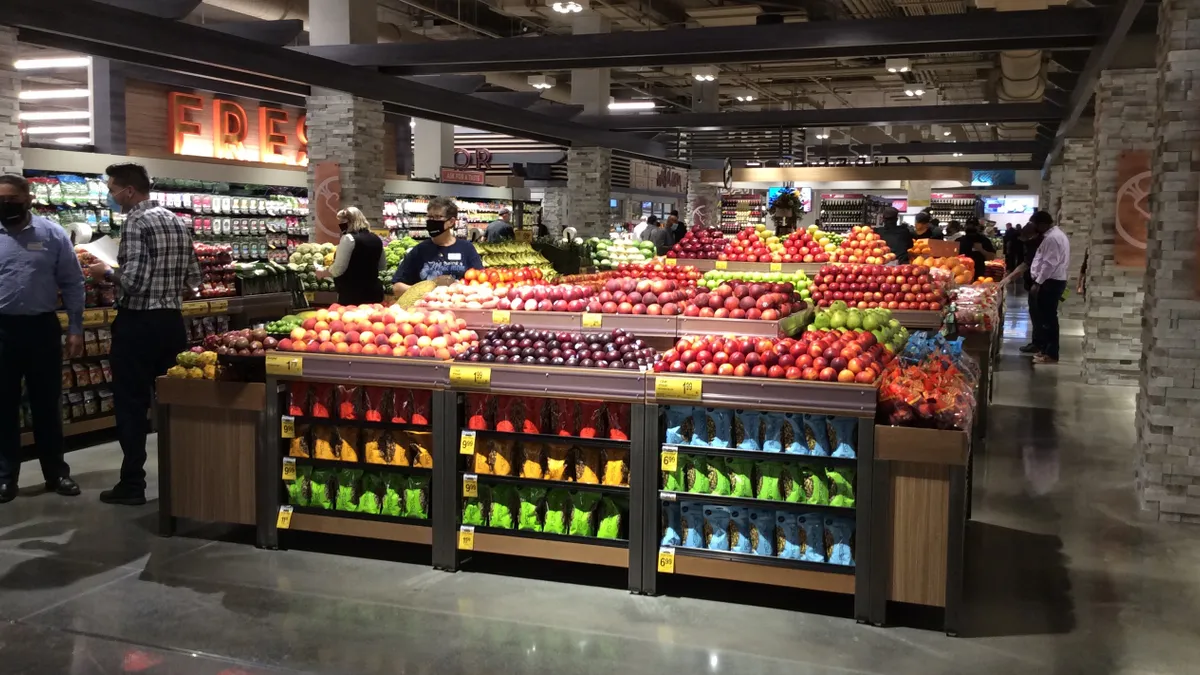Dive Brief:
- Grocery sales reversed course in November, rising 1.9% compared with the level they posted in October after falling slightly during the previous monthly cycle, according to estimated data released Wednesday by the U.S. Census Bureau. By contrast, overall retail sales shed 1.1% in November compared with the month before.
- Food retailers also saw sales accelerate in November relative to their rate one year ago. Grocery store sales during the month were 10.5% higher on a year-over-year-basis. That pace exceeded the 9.2% year-over-year gain grocers reported in October. Retail sales were up 4.1% overall in November compared with the same month in 2019, a figure that was below the 5.7% year-over-year gain seen in October.
- Grocery spending in the United States is showing renewed signs of strength after bouncing around modestly for most of the year. The November gain was the largest monthly change in grocery sales since April, when spending on groceries plummeted 13.2% following the 29.9% surge they recorded as the pandemic began gripping the nation in March.
Dive Insight:
Grocery sales continued their remarkable year in November as the nation reeled from rising levels of COVID-19 infections and public health officials beseeched people not to travel for Thanksgiving, adding fuel to the powerful at-home eating trend that has defined the industry since the virus descended on the country in March.
Many consumers shopped for Thanksgiving staples earlier in November than they have in previous years, significantly pushing up sales of a variety of foods during the first three weeks of the month even as they rose more slowly — and in some cases declined — during the week of the holiday. That led to sizable year-over-year gains for many items over the four-week period that ended Nov. 29, according to data from IRI and 210 Analytics.

Meat sales had a particularly good month, posting a sales gain of 13.9% over the same period in 2019, the figures show. Sales of beef, which have done exceptionally well throughout the pandemic, rose 18.7% year-over-year, while lamb sales skyrocketed 34%. Turkey sales marched ahead 7.3% during the four-week period, and pork sales bulked up 11.5% over that time.
Fresh vegetable sales were up 3% overall in November compared with that month in 2019, with potatoes racking up a 23.6% gain.
Grocers also banked sizable increases in sales of prepared foods, perhaps reflecting people’s desires to take at least somewhat of a break from cooking. Sales in the deli entertaining category grew 20.6%, while deli cheese sales took home a 13.3.% sales gain during the four weeks 210 Analytics and IRI studied. Alcohol, too, was a big seller, with sales of wine and beer up by 7.5% and 7.8%, respectively. Spirits and liquor sales were higher by 9.4%.
The heavy interest in spending at the grocery store came against a backdrop of rising costs for consumers as compared with last year. Prices for food for consumption at home rose 3.6% over the 12-month period that ended in November on an unadjusted basis, outpacing the overall jump in the Consumer Price Index of 1.2% recorded during that period, according to the U.S. Bureau of Labor Statistics.
Another factor influencing grocery sales is that retailers are selling fewer items with promotions, data provided by Nielsen indicates. As of the end of November, the prices of 27.5% of units reflected promotions, down 6.1% from the same period in 2019.













